A rat infestation can be recognised by droppings, gnaw marks, the smell of urine and noises. If the infestation is more severe, rats can often be observed directly.
An adult house rat produces 40-50 chops a day. Even a few rats can produce literally thousands of chops in a short time. These chops are 10-15mm long, light to dark brown in colour, curved and with pointed ends.
House rats have no fixed toilet places, but constantly shed faecal pellets where they walk and stand, which can accordingly be found in the animals' entire range of movement. This also applies to stored food and feed, which is thus contaminated with harmful germs.
Fresh faeces are lighter, moist, shiny and soft. Older droppings are hard and darker. Rat droppings contain many hairs that are swallowed during grooming.

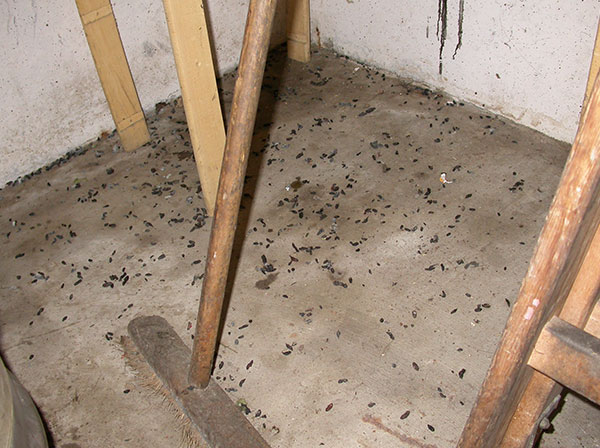
Rodents like rats have very distinctive incisors that grow back for life. An incisor of an adult house rat is 2mm wide. Bites of rats consist of 2 parallel grooves, up to 4mm wide in total.
With their distinctive gnawing instinct, rats destroy a variety of materials such as packaging, textiles, insulation materials, cables, pipes, wood, plastic, bricks, aluminium, copper and even cast iron. They use their strong cutting teeth to open food containers, extract nesting material, enlarge loopholes or simply grind down teeth when they are overlong.
House rats occasionally hollow out structural timbers, such as roof beams, to make nests in.
The holes that rats bite into the various materials have a diameter of at least 5cm and often have ragged, frayed edges.

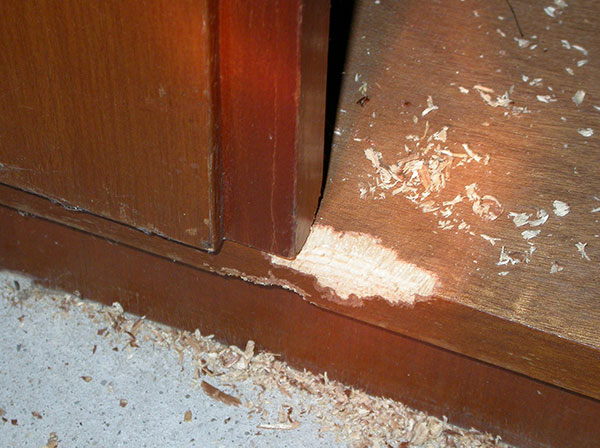

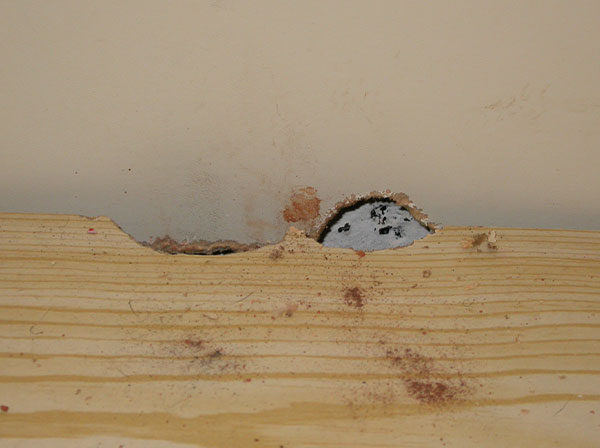
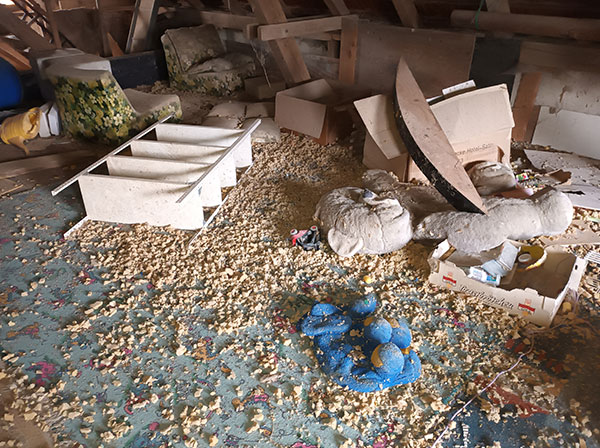
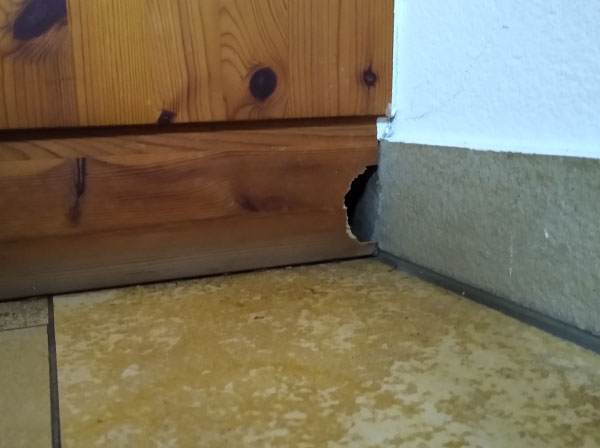
When rats are active, they make noises by gnawing or running around, e.g. in hollow spaces of ceilings. As they are nocturnal, these noises can be particularly disturbing. However, it is difficult to distinguish whether these noises come from mice or rats. If the infestation is more severe or lasts longer, a pungent urine or ammonia odour will develop. Cats and dogs often show the places where rats run or hide by excited sniffing, exploring and scratching.
House rats mark their walking paths with urine, glandular secretions and faeces. This causes heavily trafficked areas to turn dark and smell strongly. These scent marks serve as orientation in the dark. In addition, areas that are regularly walked on by rats can be easily recognised. There is no dust, leaves or other dirt on walking paths.
Walkways and rat holes are always the best places to set traps!
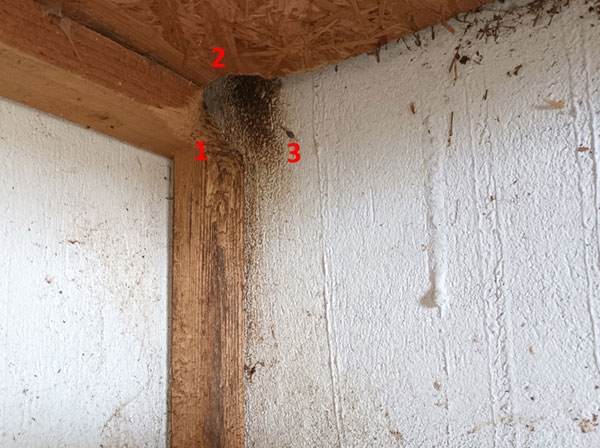
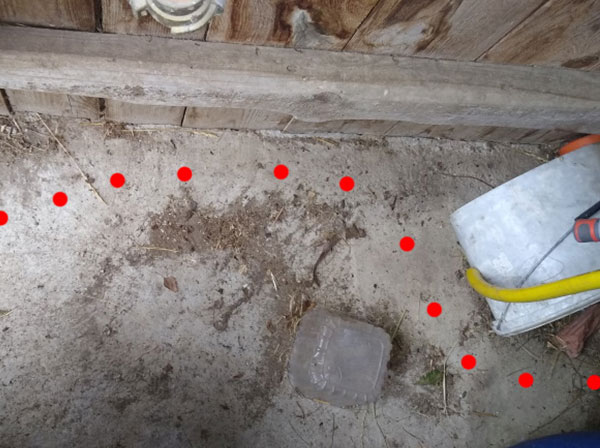
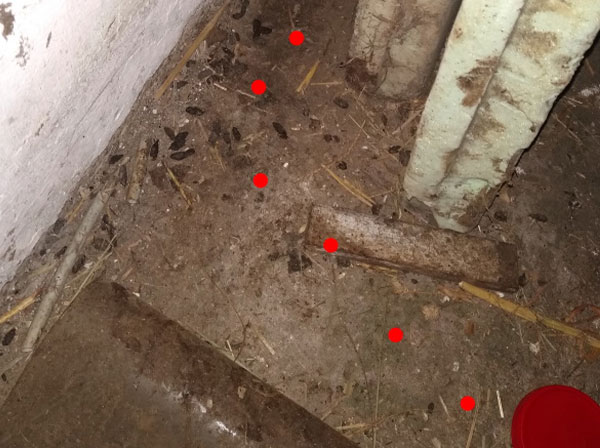
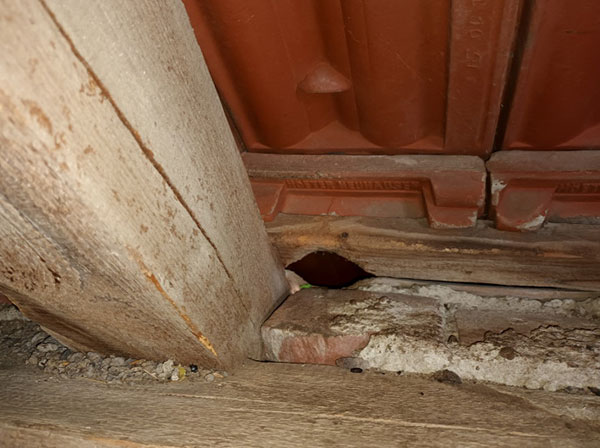
House rats destroy large quantities of food and feed, not only directly by eating, but also by contamination with hair, saliva, urine and faeces.


House rats are harmful to health because they can be infected by a variety of pathogens that can also be transmitted to humans or farm animals, such as plague, salmonella, rat bite disease, typhoid fever, rat typhus, foot-and-mouth disease, swine fever, trichinosis, Lyme disease and many more. Some of these diseases can be fatal. Living in rubbish dumps and stables, house rats come into contact with many germs and spread them over a wide area. Plague outbreaks in the Middle Ages were favoured by house rats and their fleas. Germs are transmitted through contact with the rodents' faeces, urine, saliva and hair. In addition, house rats can carry parasites such as fleas, ticks, mites and tapeworms into human dwellings.
When working with rat traps, (dead) rats or rat faeces and urine, it is advisable to wear gloves.

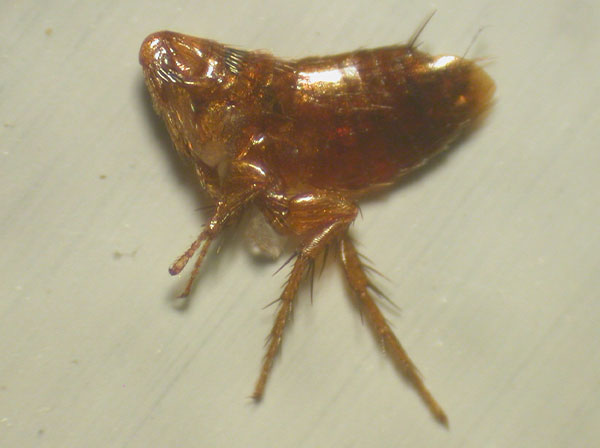

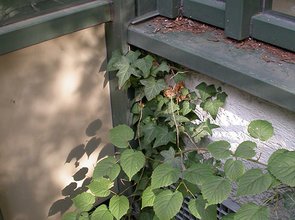

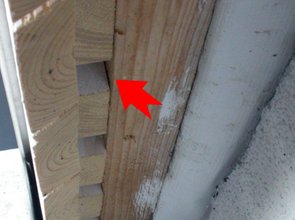




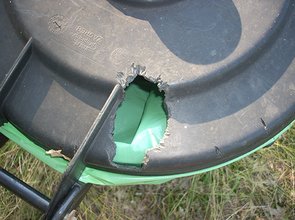
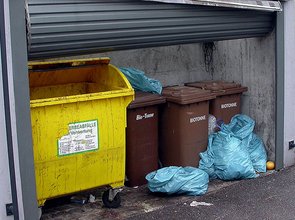
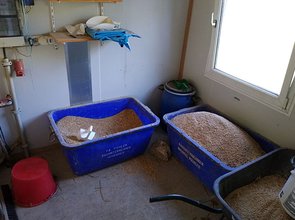
House rats cause a wide range of damage. They destroy food and feedstuffs, destroy property by gnawing and transmit pathogens to humans, domestic animals and livestock. In the following chapter, methods for prevention and control are presented.
Rats settle when favourable conditions such as a good food supply or hiding places are available. Under such circumstances, mass reproduction occurs quickly. Infestation with house rats can be effectively prevented through the withdrawal of food sources, building sealing, sanitation and waste management.
In autumn, when the fields are harvested and the cold and wet weather sets in, the rats leave their summer quarters and look for a dry and warm shelter in and around buildings for the winter. It is best to catch or drive away the rats before they have taken up residence in buildings.
Rats migrate e.g. through open or poorly closing doors and gates, but also through cellar windows, light shafts, air supply openings, pipe penetrations, cable ducts, cooling and ventilation systems or other openings in the facade or roof area. House rats need an opening of only 2cm to enter a building. Therefore, there are often many suitable access points along the building. To reliably keep rats out, all access points should be closed as far as possible.
SWISSINNO Rodent Stop Steel Wool is a quick and easy fix to plug wall openeings, holes and cracks.

The most important attraction for rats is the availability of food and to a lesser extent water. The all-important preventive measure is therefore the deprivation of food sources:
Do not store food, pet food and seeds in bags or boxes, but in rodent-proof containers. Only metal and glass can permanently withstand rats' teeth. The most frequent cause of infestation in private gardens is bird food that has fallen on the ground. Avoid excessive bird feeding. Only offer as much dog and cat food as is eaten during the day. Leftover food should be locked away at night. Rubbish must also be stored in a rodent-proof place. Food leftovers do not belong on the compost heap or in the toilet.
If possible, water sources such as leaking pipes, fountains or bird baths should also be eliminated.
Do not provide nesting opportunities for rats. Bulky waste and other rubbish does not contain food, but offers ideal hiding places and nesting opportunities and should therefore be disposed of. House rats also thrive in overgrown green spaces, scrub and ivy growth and can meet some of their food requirements from the plants. Palm trees should be pruned regularly to remove dead fronds.
The action radius of a rat pack can extend over several properties. In other words, the actual source of infestation may not be on one's own property. When searching for the causes of infestation, the neighbouring properties should always be included in the considerations, as far as possible.
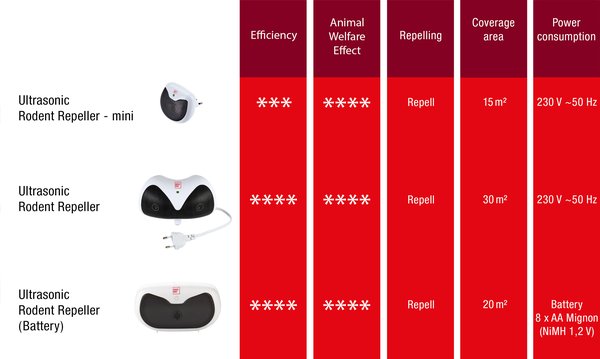
Ultrasonic rodent repellers are suitable for scaring away rats and preventing them from entering buildings. With SWISSINNO devices, the high-frequency sound is constantly changed to prevent the rodents from getting used to the sound.
It is important to note that ultrasound does not propagate through walls. Therefore, for good effectiveness, ultrasound units must be placed in all affected rooms.
However, if an infestation already exists, the sole use of ultrasonic rodent repellers is not sufficient to get rid of the rats. These devices should always be used as part of an integrated pest control strategy. Food deprivation, clearance and cleaning measures, closure of access routes, traps and ultrasonic rodent traps are used together.
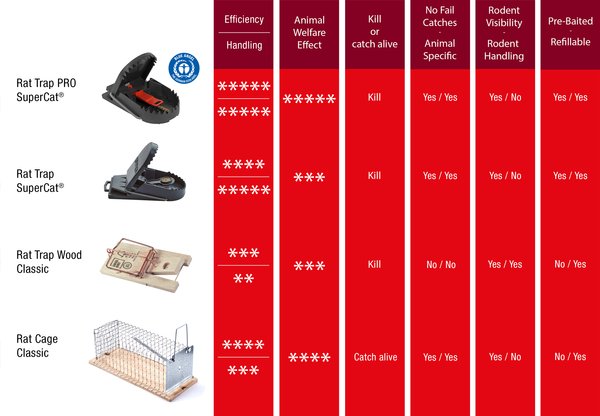
With rat traps you can control rats without poison and in a humane way. SWISSINNO rat traps are robust, precise, animal welfare compliant and can be used many times. Great advantages of rat traps are the reliable proof that the rat has been caught and the fact that the dead rats can be disposed of. If poison baits are used, there is no simple and clear control of success, because the dead rats are often not found, but decompose (smell, maggots!) in inaccessible places.
There are 3 types of rat traps that are commonly used: Snap traps, live traps and electronic traps.
The following table gives an overview of the different SWISSINNO rat traps:
Rats are not just big mice. They are fundamentally different in behaviour. Mice are easy to catch, but rats are not. Rats have an innate shyness towards traps and are generally very suspicious. They are also social animals that learn quickly from each other. You have to be very careful when trapping if you want to be successful. Any mistake will lead to trap shyness, in the worst case for the whole pack. Individual rats can still be caught well with traps. However, in the case of a larger infestation, comprehensive measures are necessary. It is not enough to simply set up traps.
Trapping - tips from the pros:

Chicken house with rat infestation, trap placed in the corner along a rat run and secured with a wire rope
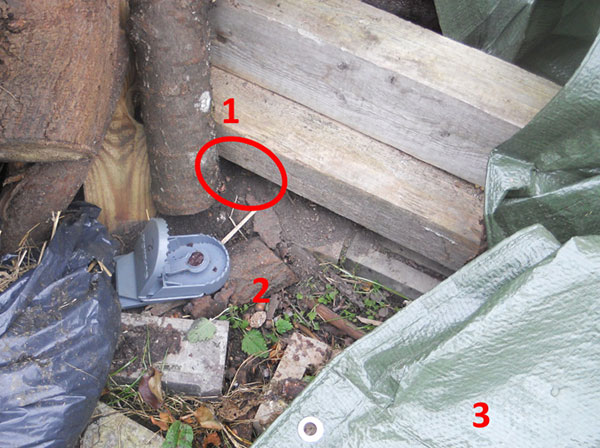
Rat trap set outside:
1. treaded rat hole
2. Wood placed underneath so that trap stands straight and firm
3. The whole thing was covered with the tarpaulin so that no other animals could get to the trap.

Rat traps placed at rat hole on walkways:
1. Passage
2. inverted tray to shield the traps and allow access from the front onlyn

To date, poison baits are a fast and reliable method of rat control. SWISSINNO nevertheless advises against the use of poison baits for several reasons:
However, if a rat infestation cannot be eliminated despite the best trap application and all flanking measures, the use of poison baits should be considered.